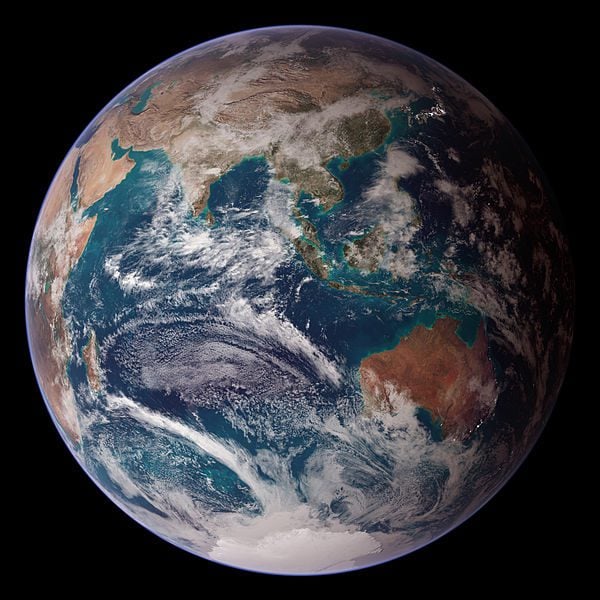
I’ve lately posted a loosely related series of four blog entries:
Continuing in the spirit of those four entries, which attempt to sketch how thin the inhabitable circumference of the Earth is, I turn my attention to something much thinner still:
Soil is the loose, upper, “weathered” layer of Earth’s crust that is capable of supporting plant life — and upon which, therefore, animal life (including human life) clearly depends. It consists of a mix of organic material (decayed plants and animals) and broken bits of rocks and minerals, and is mostly made of the elements oxygen, silicon, aluminum, iron, and carbon.
The thickness of soil and its character depend upon the type of underlying rock, the climate, the age of the soil itself, and the effects of living (or once-living) organisms such as plants, fungi, animals, and bacteria.
The formation of just an inch of soil can require up to 1000 years. “Immature” soils are little more than fragments of rock, broken off from more solid rock below. By contrast, “mature” soils include humus — not, incidentally, to be confused with hummus — which is formed from decayed plants. This is the reason that the topsoil or upper surface of the soil becomes dark. The process of plant or vegetative decay releases carbon dioxide and organic acids that dissolve lime, iron, and other such compounds.
It’s tempting to dismiss soil as mere “dirt.” If something or someplace is “dirty,” we want to clean it, to get rid of the dirt. But life on Earth would be impossible without soil. For example,
- Many plants require soil in which to grow. They anchor themselves into the ground with their roots and they thereby extract nutrients from the soil.
- Soil releases important gases such as carbon dioxide into our atmosphere.
- Soil plays a vital role in cycling nutrients (e.g., the carbon and nitrogen cycles).
- Soil helps to filter and clean our water.
Soil is not only vital to life. It is, itself, teeming with life. In a teaspoon of good soil, for example, there will typically be several hundred million bacteria. Moreover, a typical acre of good cropland will serve as the home to more than a million earthworms. And, of course, many animals, fungi, and bacteria rely on soil as a place in which to live.
However, the primary layer where plants and other organisms live is the topsoil, which is typically only five to ten inches thick where it exists at all
Below the topsoil is the subsoil, which is made up primarily of clay, iron, and organic matter. Below the subsoil is the so-called “parent material,” mostly large rocks that have not yet been broken down — so called because the topsoil and subsoil develop from it. And beneath the “parent material” is bedrock, a large mass of solid rock located several feet below the surface.
So human life, like all other life, depends upon a very thin layer of soil — five to ten inches of it, really — on the surface of a planet that is approximately 12,756 kilometers (or 7926 miles) in diameter.










